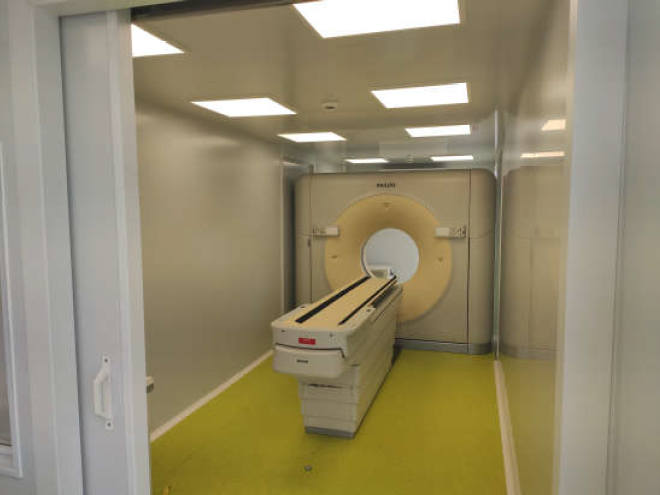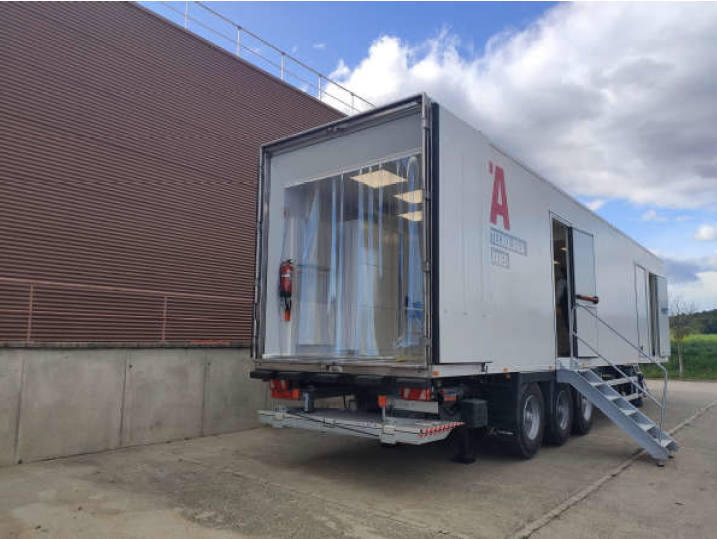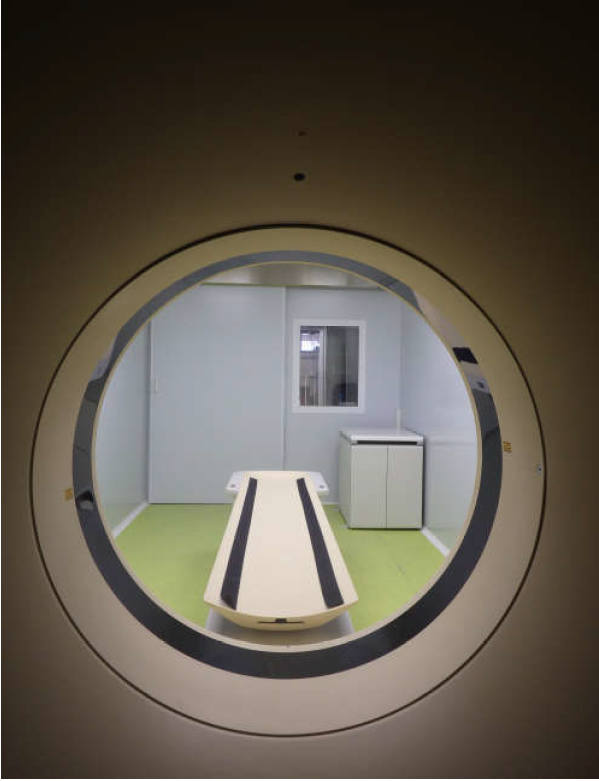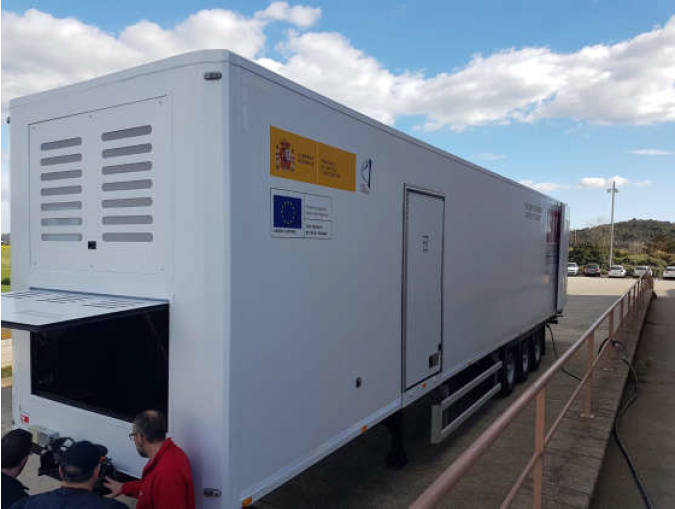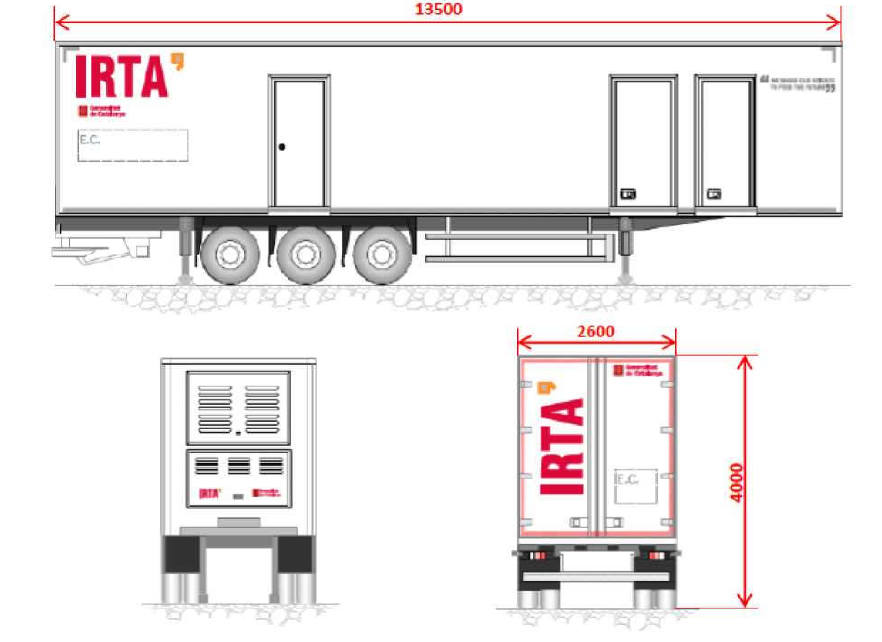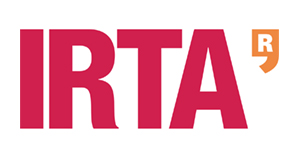Mobile TC (truck)
GINYS-IRTA-001
Maria Font i Furnols
Responsable
Computed tomography (CT) allows you to see, in a non-invasive way, the composition of materials or products. For this reason, it can be applied to live animals in order to carry out genetic improvement studies, growth curves, studies on fat deposition according to diet, genetics, sex, age, etc. It can also be applied to animal carcasses (or pieces) to obtain its tissue composition as well as other relevant quality characteristics such as fat and muscle thickness, areas, volumes, etc. In this sense, it is being applied in channel classification issues, in order to obtain the percentage of lean of these and use it as a reference system for classification equipment in the slaughter line.
CT also has important potential for optimizing food processes as it is a non-destructive technology that allows the evaluation of the same product throughout the process. The fact that the salt and water content in a given area can be predicted makes CT very useful for optimizing salting and curing processes. It can also be used to optimize freezing processes, among others.
X-rays emitted by the CT equipment lose some of their initial energy as they pass through the tissues. This energy attenuation is directly related to the density of matter, producing images with more contrast with the increase in its density. This makes it possible to obtain images where the different tissues can be differentiated and to obtain different quality parameters that are related to them (fat and lean thicknesses, area, volumes, fat and lean content, etc.). That is why it is a very useful technology in terms of channel quality and parts (pieces). In addition, salt has a higher density than meat and appears in images with more contrast. Therefore, curing processes can be easily evaluated using this technology. IRTA offers computerized tomography to support all the agri-food sector with a mobile CT, installed inside a truck, which allows this technology to be applied in any industry. The applications range from live animals, channels and fish, to fruits.
Services
The mobile equipment is located in the Camps i Armet estate in Cruïlles, Monells and Sant Sadurní de l’Heura (Baix Empordà) on the IRTA site in Monells, although it can be used wherever it travels.
- Applications in genetic improvement
- Calibration of channel classification equipment
- Applications in animal nutrition
- Other applications for the agri-food industry
Other applications of computed tomography in the agri-food sector may be the following:
- Support in the design and development of new processes.
- Optimization of low-salt meat and fish processing processes.
- Evaluation of the quality of the final product.
- Control of drying processes, anomalies and maturation in food (meat products, fish, fruits, cheeses, etc.).
- Improved productivity and automation.
- Improving the quality of processed products.
- Study of freezing / thawing processes.
- Study of water gradients in different products, etc.
Equipment
The installation is located in a trailer that has dimensions of 13.5 x 2.60 m2 with a height of 4 m. It is a mobile unit in which three main areas can be distinguished:
- Front spaces: technical room on two levels (upper for air conditioning machines, and lower for the auxiliary battery system of the platform and storage).
- Central room: Scanner room or controlled area. Leaded in all its walls, floor and technology.
- Rear room: Control room or area. For scanner operation, sample warehouse and work. All rooms are air conditioned according to the needs of each area.
Projects
Title:
PIGWEB - An infrastructure for experimental research for sustainable pig production
Reference:
https://www.pigweb.eu/
Funding Organism:
EU
Status:
Executing
Title:
REDUCE.PORK: Development of new approaches and technologies to address the global and local environmental impact of swine production while preserving its economic competitiveness
Funding Organism:
AEI
Status:
Executing
Title:
Support to establishment of carcass classification system in line with EU Common Agricultural
Funding Organism:
UE
Status:
Executing
Title:
SUSPORK: Towards a global sustainability of pig production through efficient feeding strategies, intelligent musculoskeletal evaluation and consumer attitudes
Funding Organism:
AIE
Status:
Executing
Title:
BellyQTech : Classification and evaluation of the global quality of pork belly through non-destructive technologies and perception by consumers
Funding Organism:
AEI
Status:
Executing
Publications
Non-destructive evaluation of carcass and ham traits and meat quality assessment applied to early and late immunocastrated Iberian pigs
Animal, 15(4), 100189 (2021)
Animal, 15(4), 100189 (2021)
Prediction of tissue composition of live dairy calves and carcasses by computed tomography
Livestock Science, 243, 104371 (2021)
Livestock Science, 243, 104371 (2021)
Effects of Exogenous 6-Phytase (EC 3.1.3.26) Supplementation on Performance, Calcium and Phosphorous Digestibility, and Bone Mineralisation and Density in Weaned Piglets
Animals (Basel), 11(6), (2021)
Animals (Basel), 11(6), (2021)
Computed tomography evaluation of gilt growth performance and carcass quality under feeding restrictions and compensatory growth effects on the sensory quality of pork
Livestock Science, 237, 104023 (2020)
Livestock Science, 237, 104023 (2020)
Effects of a high-fat-diet supplemented with probiotics and ω3-fatty acids on appetite regulatory neuropeptides and neurotransmitters in a pig model
Benef Microbes, 11(4), 347-359 (2020)
Benef Microbes, 11(4), 347-359 (2020)
Effects of additional organic micro-minerals and methionine on carcass composition, gait score, bone characteristics, and osteochondrosis in replacement gilts of different growth rate
Animal Feed Science and Technology, 256, 114262 (2019)
Animal Feed Science and Technology, 256, 114262 (2019)
Intramuscular fat content in different muscles, locations, weights and genotype-sexes and its prediction in live pigs with computed tomography
Animal, 13(3), 666-674 (2019)
Animal, 13(3), 666-674 (2019)
Evaluation of an automatic lean meat percentage quantification method based on a partial volume model from computed tomography scans
Computers and Electronics in Agriculture, 151, 365-375 (2018)
Computers and Electronics in Agriculture, 151, 365-375 (2018)
Growth of total fat and lean and of primal cuts is affected by the sex type
Animal, 11(8), 1321-1329 (2017)
Animal, 11(8), 1321-1329 (2017)
Relationship between pig carcass characteristics measured in live pigs or carcasses with Piglog, Fat-o-Meat’er and computed tomography
Livestock Science, 197, 88-95 (2017)
Livestock Science, 197, 88-95 (2017)
A semi-automatic and an automatic segmentation algorithm to remove the internal organs from live pig CT images
Computers and Electronics in Agriculture, 140, 290-302 (2017)
Computers and Electronics in Agriculture, 140, 290-302 (2017)
Prediction of salt and water content in dry-cured hams by computed tomography
Journal of Food Engineering, 96(1), 80-85 (2010).
Journal of Food Engineering, 96(1), 80-85 (2010).
Estimation of NaCl diffusivity by computed tomography in the Semimembranosus muscle during salting of fresh and frozen/thawed hams
LWT - Food Science and Technology, 51(1), 275-280 (2013).
LWT - Food Science and Technology, 51(1), 275-280 (2013).
Partial scanning using computed tomography for fat weight prediction in green hams: Scanning protocols and modelling
Journal of Food Engineering, 142, 146-152 (2014)
Journal of Food Engineering, 142, 146-152 (2014)
Non-destructive analysis of aw, salt and water in dry-cured hams during drying process by means of computed tomography
Journal of Food Engineering, 101(2), 187-192 (2010)
Journal of Food Engineering, 101(2), 187-192 (2010)
Including estimated intramuscular fat content from computed tomography images improves prediction accuracy of dry-cured ham composition
Meat Science, 96(2, Part A), 943-947 (2014)
Meat Science, 96(2, Part A), 943-947 (2014)
Tools for Studying Dry-Cured Ham Processing by Using Computed Tomography
J Agric Food Chem, 60(1), 241-249 (2012)
J Agric Food Chem, 60(1), 241-249 (2012)

